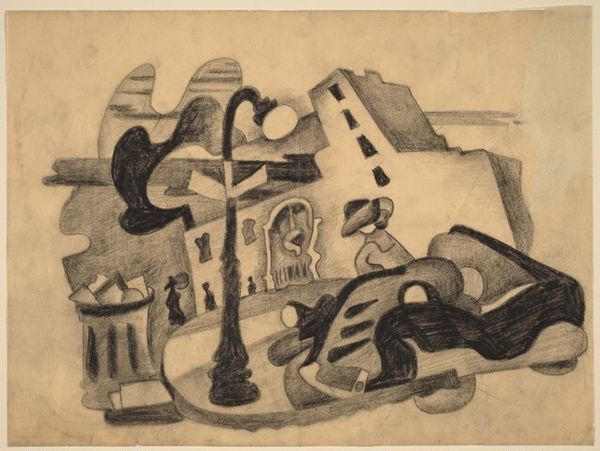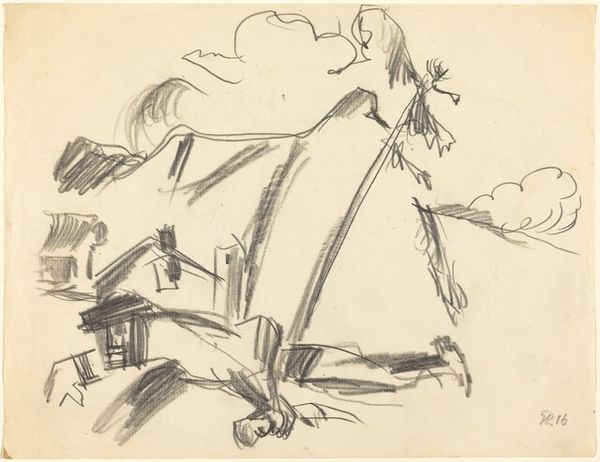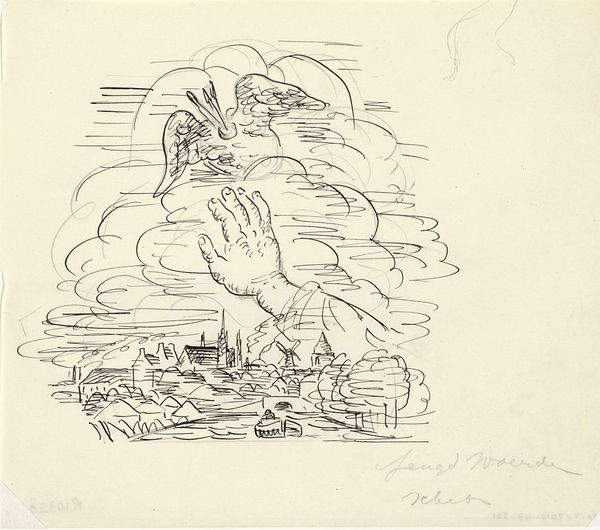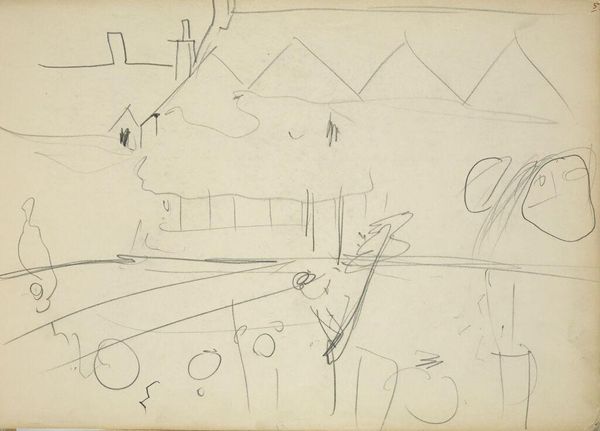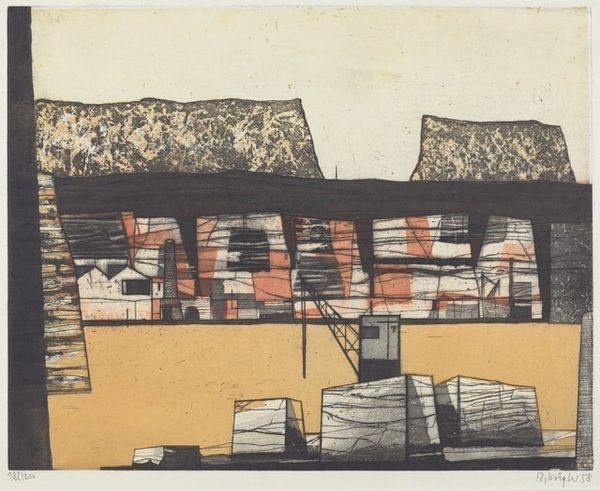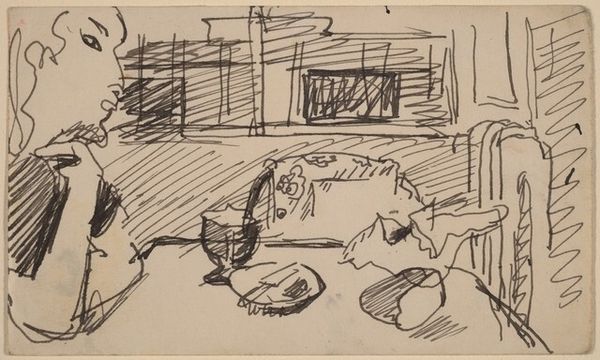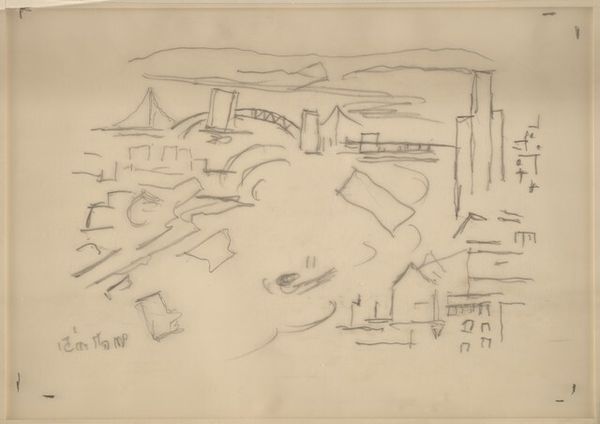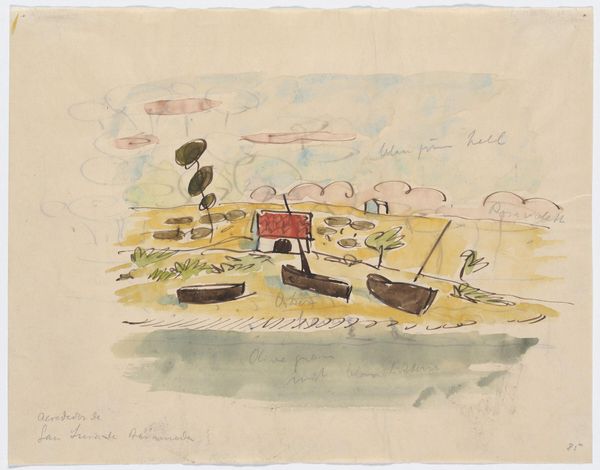
drawing, print, etching, ink
#
drawing
#
cubism
#
ink drawing
# print
#
etching
#
landscape
#
ink
#
cityscape
#
modernism
Dimensions: plate: 17.7 x 20.9 cm (6 15/16 x 8 1/4 in.) sheet: 35.9 x 44.5 cm (14 1/8 x 17 1/2 in.)
Copyright: National Gallery of Art: CC0 1.0
Curator: Here we have Marc Chagall’s "House in Peskovatik," created in 1922. It’s an etching and ink drawing printed on paper, a stunning example of his modernist style. Editor: It feels unbalanced, almost dreamlike. The house seems to teeter, defying gravity. The details, though, are sharp and carefully rendered. Curator: Chagall's process often involved a negotiation between memory and material constraint. As a print, consider how the etching lines are physical imprints, both mirroring and distorting the memory of this locale. Think about the zinc or copper plate, its availability during a tumultuous period in the artist's life, influencing scale and mark-making. Editor: And those skewed angles! There's an unsettling feeling evoked by the house's placement. Is that a figure peering out of the window, and another one struggling to keep the building upright? This symbolises instability, doesn't it? Perhaps a reflection of the upheaval of the time, rendered in architectural metaphor? Curator: It’s interesting you point out the seeming struggle to hold the building upright. I believe this can be seen as an observation on labor conditions in the early 20th century, specifically on Jewish populations who often lived in these areas. Editor: I hadn't thought of it that way. I was leaning more toward themes of displacement, maybe a visual echo of cultural memory, clinging to a home that might be lost, or perhaps referencing loss in a much broader and deeper way. Note how the "Tut" inscription is presented alongside figures enclosed in, around, and outside the edifice...almost a performative play on in/out-group relations. Curator: I see what you mean. Yet I would suggest it may also comment on class structures within society. This would imply access to certain means. Etching is, in its way, a means to disseminate this very idea. Editor: Indeed, seeing both elements working together really amplifies its potency. Thank you for providing these important connections, illuminating the historical layers beneath its imagery. Curator: Thank you for shedding light on its symbology and meaning. Both angles really add to understanding the piece, I think.
Comments
No comments
Be the first to comment and join the conversation on the ultimate creative platform.



